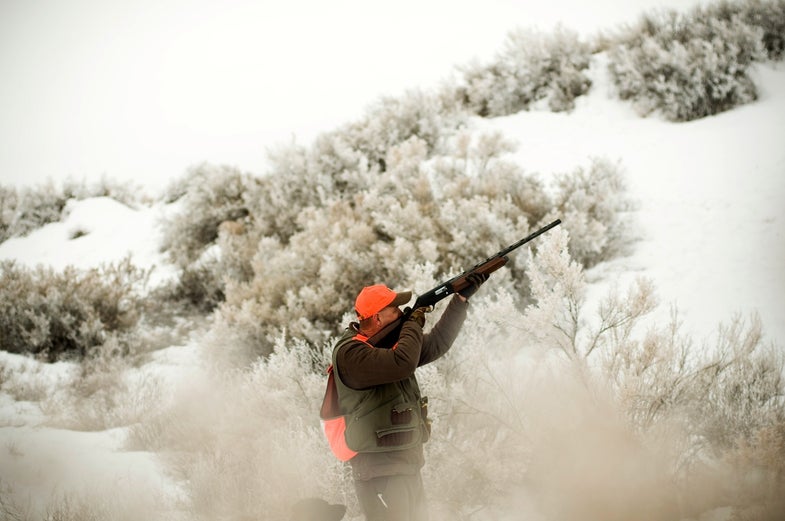“Pattern Density Kills, Not Pellets”
We may earn revenue from the products available on this page and participate in affiliate programs. Learn more › The...

We may earn revenue from the products available on this page and participate in affiliate programs. Learn more ›
The phrase has been bandied quite a bit in this space lately so I thought I would weigh in. The truth (shocker) lies somewhere in the middle.
Pattern density is important, but so is pellet energy.
Let me start with an extreme example:
Winchester used to – and maybe still does – load a shell called the 2-2-10: two ounces of 10 shot over two drams equivalent of powder. It was a specialty load made for the game of card shooting, where competitors see who can put a pellet closest to a tiny X on a card set somewhere between 18 and 35 yards. The 2-2-10 is very slow so it will pattern tightly, and it contains 1,736 pellets. If pattern density tells the whole story and energy matters not at all, it would be the ultimate shotshell.
A friend of mine who worked for Winchester shot a starling in his backyard with a 2-2-10 one day. He said there was a huge puff of feathers. When they settled he was looking at a very indignant, half-plucked starling, which then flew away.
So, obviously pattern density doesn’t tell the whole story. You still need to shoot pellets that strike the target with sufficient energy to penetrate to the vitals. The standard advice is to choose the smallest size shot that will give adequate penetration for the birds you’re hunting. That way you get adequate penetration and maximum pattern density.
Personally, I err to the side of bigger pellets. I know I could kill lots of pheasants and geese with lead 7 1/2s and steel 2s respectively, but I lean toward 5 shot for pheasants and BBs for geese because bigger pellets leave fewer holes in the bird for me to eat around. They also leave fewer pellets in the meat, as larger shot tends to penetrate on through the tasty parts into the vital parts, while small pellets lodge in the meat where I might bite them. And, on the off chance that I take a long shot, the bigger pellets will retain sufficient energy to kill the bird.
One of the examples that came up in the comments section involved shooting turkeys with 7 ½ and 8 shot and I think that may be a little bit of an exception to the shot size rule. According to a study that involved shooting actual turkeys that Winchester conducted, outside of very close range, 7 ½ and 8 shot lack sufficient energy to penetrate a turkey’s skull and vertebrae. That said, I have no doubt lots of turkeys have been killed by patterns of pellets that didn’t fully penetrate. A blow to the head and neck from a swarm of shotgun pellets is nothing to shrug off. I suspect it’s about as deadly as hitting a bird in the head as hard as you can with a tennis racket, which, I think, would kill a turkey just about every time you tried it until your arm got too tired.
But, while I think that might work for turkeys, it’s not a theory I’d trust when it came to shooting birds in the air.